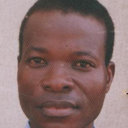Therapeutic effects of various solvent fractions of Alstonia boonei (apocynaceae) stem bark on Plasmodium berghei-induced malaria.
Ключевые слова
абстрактный
Malaria, the most important parasitic disease afflicting man is the leading cause of mortality and morbidity in the world. Chemotherapy remains the mainstay for the treatment and prevention of the disease in the absence of an effective vaccine. The incidence of resistance of malaria parasites to chemotherapy is increasing and complicated. This study was therefore undertaken in order to evaluate the therapeutic effects of fractions of the stem bark of A. boonei on P. berghei-induced malaria using chloroquine as control. Different doses (200 mg/kg and 400 mg/kg body weight) of methanolic extract (ME), n-hexane (HF), chloroform (CF), ethylacetate(EF) and aqueous (AF) fractions of the stem bark of A. boonei were administered orally to albino mice. Five milligrammes chloroquine base per kilogramme body weight (5 mg/kg bw) was used as positive control while the negative control mice received only the vehicle (5% v/v tween 80). The results obtained showed that the 400 mg/kg bw dose was more effective with respect to the parasite clearance than the 200 mg/kg bw dose. The 400 mg/kg bw dose of ME gave 68.1% percent parasite clearance. The CF gave the highest clearance of 98.4% at 400 mg/kg bw after 7 days treatment while chloroquine at 5 mg/kg bw gave 100% parasite clearance. The order of increasing potency of the fractions (parasite clearance) was (EF 50.0% < AF 60.3% < HF 63.1%, < CF 98.4%) indicating that the active principle in the stem bark was highest in the CF. Percentage parasitemia following exposure to these fractions also decreased in all groups in the same order and was only significant (p < 0.05) in CF (0.11%) compared to the untreated control group. The ME of A. boonei also caused increase in PCV by 15.5%. Purification enhanced PCV value as the HF and CF fractions gave 19.0% and 24.5% increases, respectively. However, 31.5% increase in PCV was obtained in the albino mice treated with chloroquine. The EF and AF gave increase of 10.0% and 11.0% increase relative to the negative control treated mice. The high bioactivity of CF and HF indicate that the putative compound(s) in A. boonei are lipophillic and further purification could enhance greater activity. Further work is required to isolate the bioactive compound for a promising antimalarial drug from the chloroform fraction.



